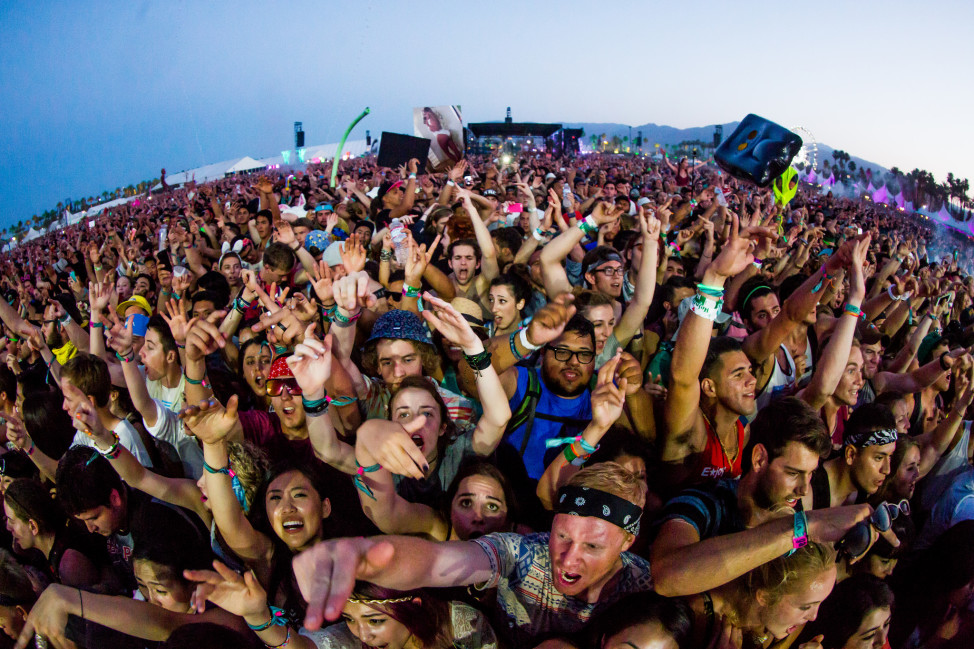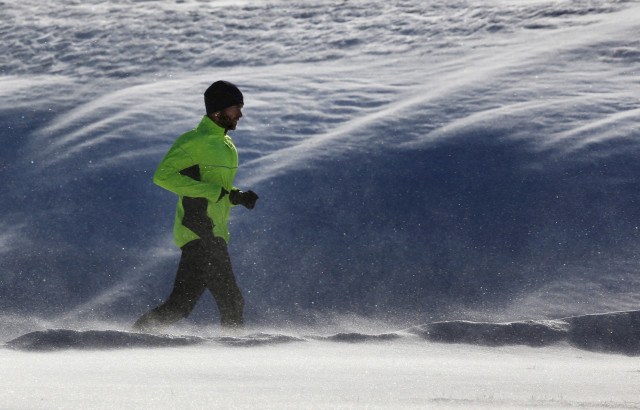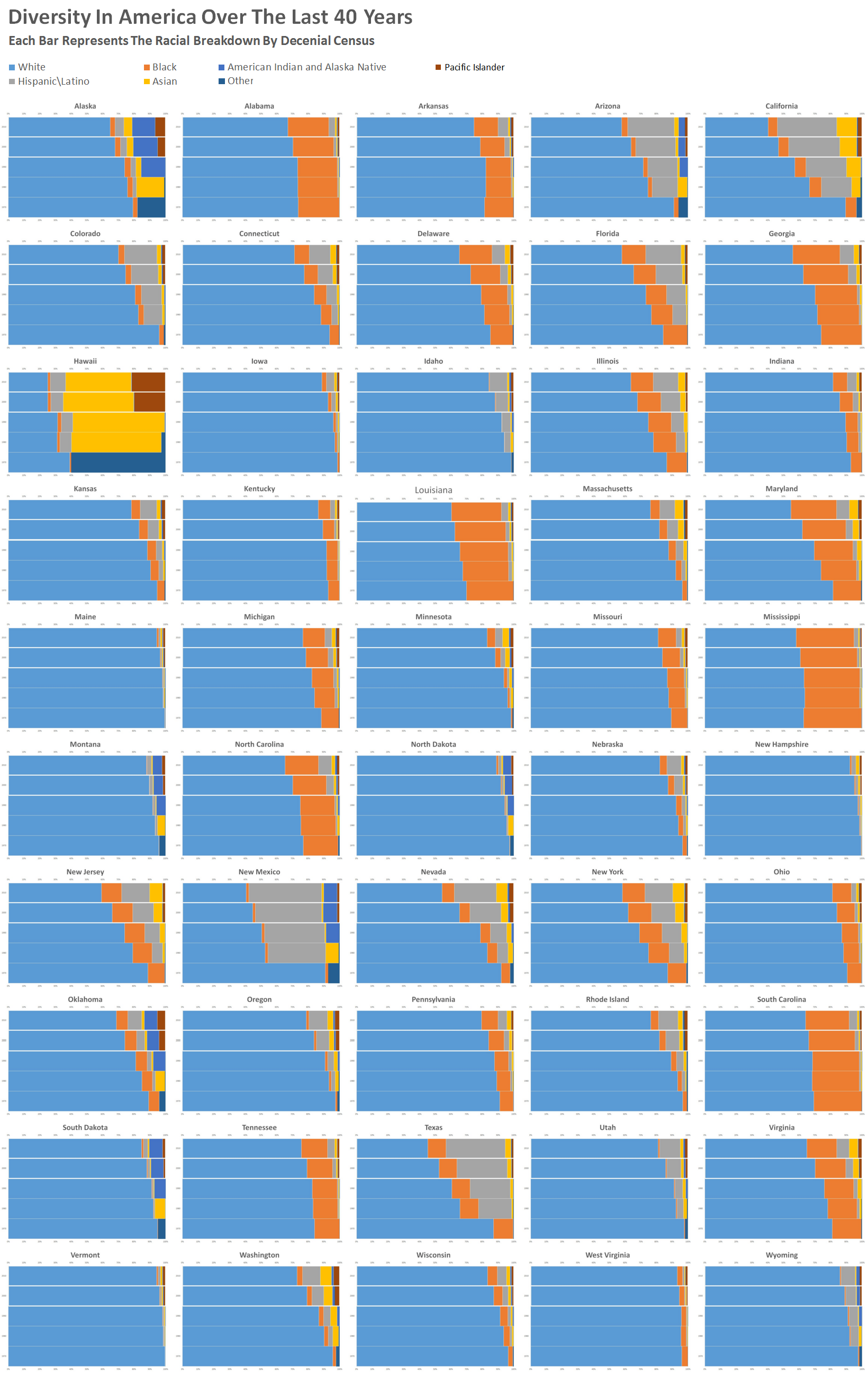
A diverse California crowd at Coachella, a musical event on April 20. 2014. (Photo by Flickr user Thomas Hawk via Creative Commons license)
Over the past four decades, the level of diversity in the United States has increased most in California, Nevada, New Mexico and Texas.
In 1970, California — currently the most diverse state in the nation — had a population of about 20 million and the overwhelming majority of its residents — 17.8 million — identified as white.
Forty years later, California has sizeable Hispanic, Black and Asian populations. In 2010, of the 37 million people living in the Golden State, 14 million identified as Hispanic, more than 5 million were Asian and 2 million were African Americans, while about 15 million were white.

A jogger goes for a run in Maine, where 1.2 million of the state’s 1.3 million residents are white. (AP Photo)
In 2010, Nevada had a population of 2.7 million, 1.5 million were white with 208,000 African Americans and 716,000 Hispanics. Back in 1970, there were 488,738 people living in the Silver State and 449,790 of them were white.
In addition to California, the other most diverse states in the country include Hawaii, New Mexico and Texas. Both New Mexico and Texas border the country of Mexico and boast large Hispanic populations.Texas is home to 25 million people, 9.5 million of whom are Hispanic.
Evidence of this modern-day American melting pot is less apparent in the East Coast states of Maine, Vermont, New Hampshire and West Virginia, the least diverse in the nation.
In 2010, of Maine’s 1.3 million residents, 1.2 million were white. In Vermont, whites accounted for 590,223 of the state’s total population of 625,741.
Zippia, a career resource website, used information from the U.S. Census Bureau to create the following graphic reflecting the nation’s changing diversity.
